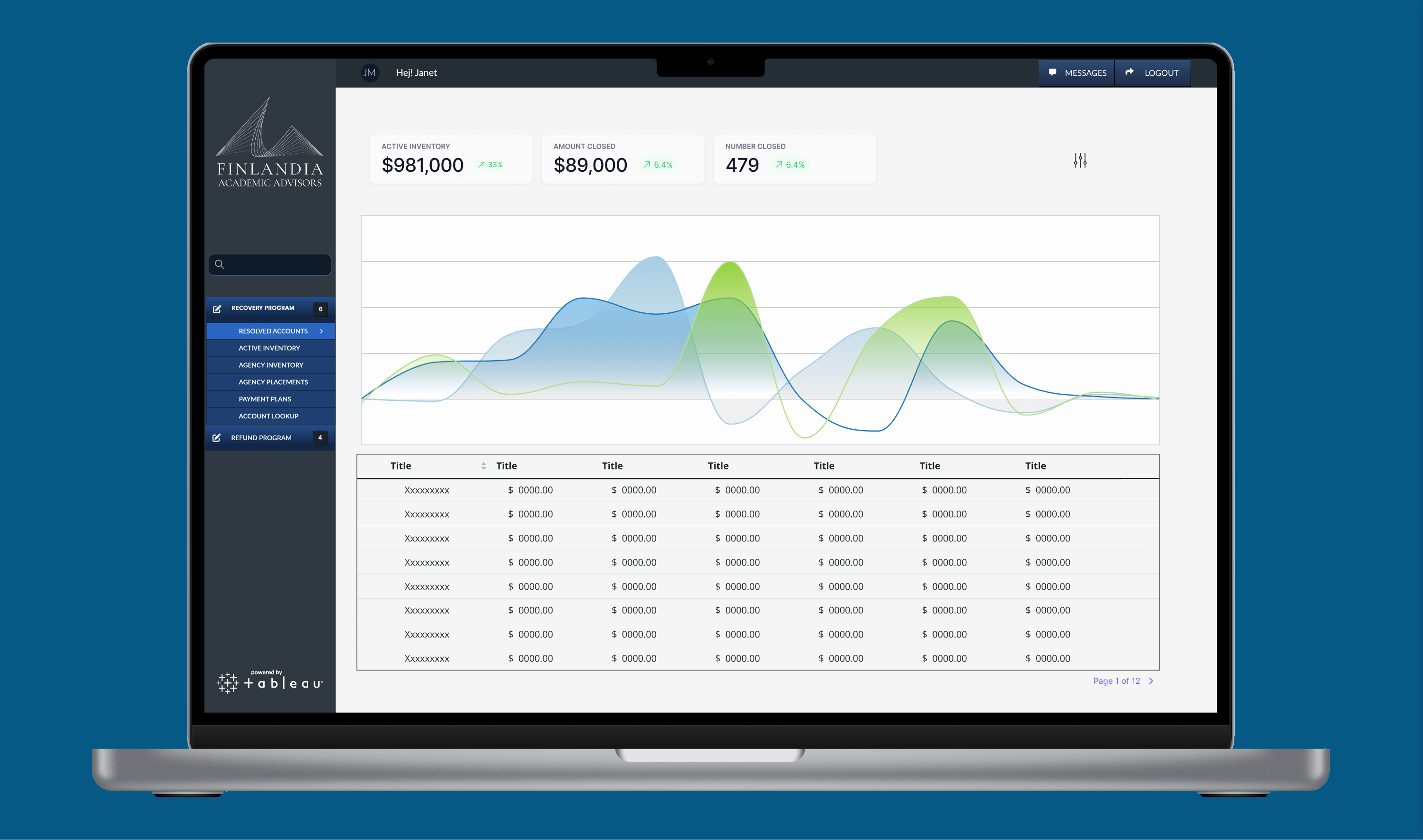Dynamic Dashboards

Streamlining Financial Analysis with
User-Centric Dashboards for Education Executives
By reimagining how financial data is presented and interacted with, we made data more accessible and actionable for clients and set a new benchmark in financial data visualization and collaborative decision-making.
University administrative and financial teams were bogged down by an outdated, manual report-request system. This inefficiency hindered timely decision-making in a sector where speed and accuracy are crucial.
In response, I led the development of a streamlined, user-friendly executive dashboard. This tool provided real-time, essential data such as enrollment figures and financial metrics, tailored to the specific needs of university teams. The new system significantly improved decision-making speed and operational efficiency in the fast-paced educational environment.
Lessons Learned from this project
Follow mobile UX best practices.
Using mobile UX best practices played a crucial role because of familiarity, expectations when an action was taken.
Make error recovery easy and obvious.
The importance of building systems that allow users to recover from errors and continue their tasks seamlessly, enhancing user satisfaction and trust.
dynamic content
6 content categories to tell a unique story
The first week involved intensive user testing, including eye-tracking, to identify navigation issues. We observed that users struggled to find necessary reports, leading to high call volumes. In response, our team, including a UI Designer, developed user stories for targeted improvements. Over two one-week sprints, we iterated on navigation paths and interactive elements, significantly enhancing the user experience.
MODULAR CONTENT
A dynamic design system that fits any content
Finally, we needed a modular design system for the site that would allow for a high degree of flexibility without a huge amount of tech debt or a need for constant rework. We started with the content inventory, grouped the content into its different types, and then created 30 modules that could house them. We then refined those down to 10 modules by refining the design and the content so one module could present multiple types of content in different categories.
